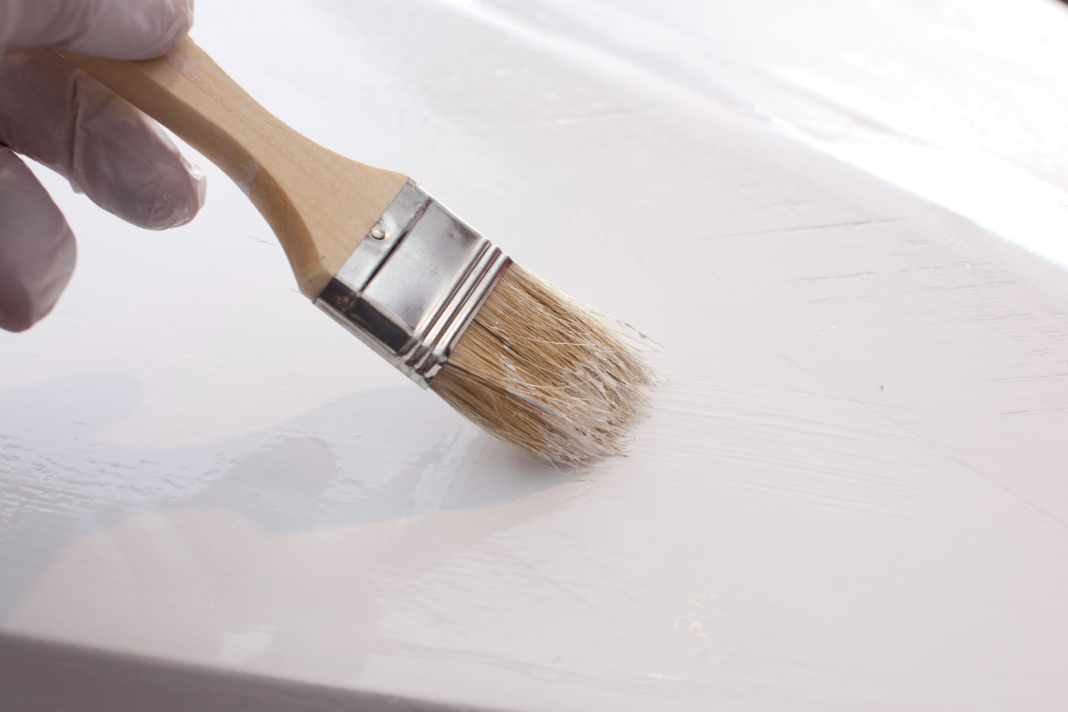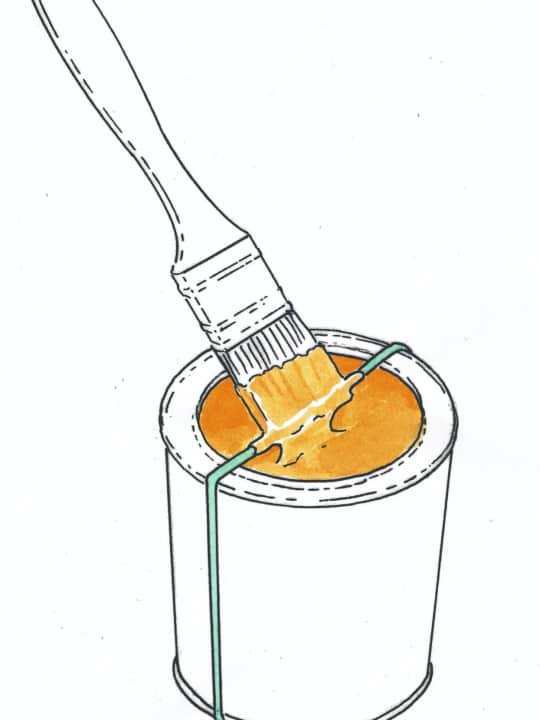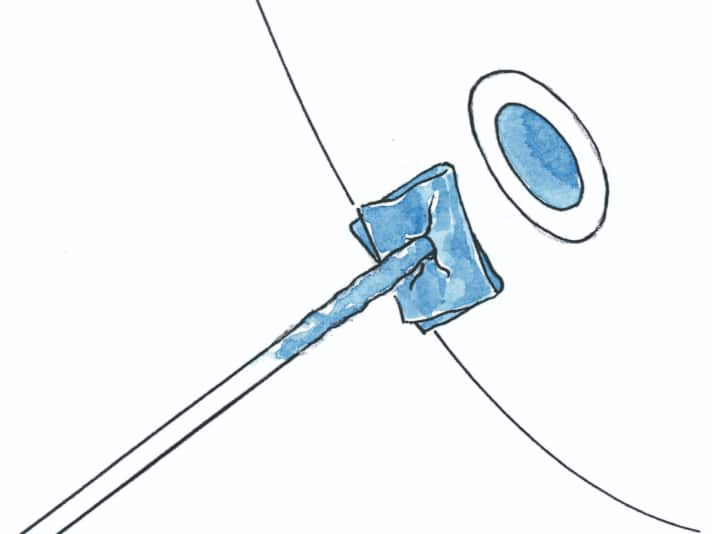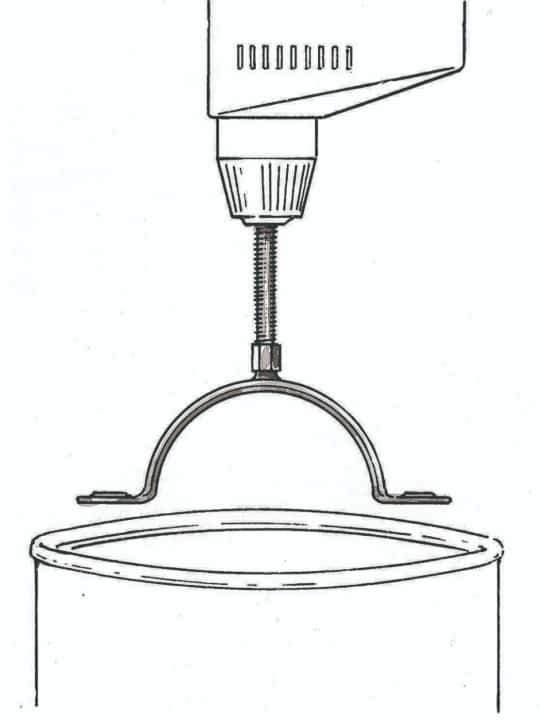





Colour lifehack 1: Akkurates paint result thanks to old nautical chart

A different antifouling is used on the saildrive of our yacht than on the rest of the underwater hull. The separation takes place between the rubber sleeve and the saildrive. We use two old nautical charts so that we don't accidentally hit the saildrive when painting the antifouling. The relatively stiff paper of the card can be pushed upwards along the saildrive under the sleeve. We do this from both sides and then fold the corners around the saildrive and secure them with tape. This also protects this area from dripping paint. In this way, the entire sleeve can be painted right up to the edge. Once the paint has dried, the card is simply folded upwards onto the underwater hull and the saildrive is painted. Manfred Schmidt, Stampe
Colour lifehack 2: Rubber band to prevent spillages

Applying paint directly from the can is actually impractical and impossible when using a roller. However, if you only want to quickly paint the baffle areas under the crane with antifouling, for example, it makes sense to use a brush. However, the whole can quickly becomes greasy if it is wiped off at the edge. To avoid this, a simple rubber band is sufficient. A slightly wider and firmer model is best. It is stretched vertically around the can. This ensures that excess paint ends up where it belongs: in the tin. Despite the rush, don't forget to stir! Anni Brucks, by e-mail
Colour lifehack 3: Good against smallpox

We had the problem that some of the side passages were overgrown. That's why we're now also thoroughly protecting the side passages against overgrowth. To do this, we use a piece of threaded rod (a screwdriver or paintbrush handle also works) and pieces of strong cotton cloth. Cut two or three squares out of the cloth. Then stick them onto the threaded rod. With this aid, the antifouling can be distributed very well in the ship's passage. Wolfgang Dinse, Kiel
Colour lifehack 4: Metal mixer for paint

If you want to stir up 2K paints or antifouling, you will probably soon realise that standard plastic mixers cannot cope with the sediment. However, it is precisely this base at the bottom of the can that contains the important pigments or, in the case of antifouling, the biocides. We therefore built a metal mixer from half a pipe clip with a threaded socket and a threaded rod. Clamped into the cordless screwdriver, it makes a great stirrer. Klaus Breuer, Swisttal
Do you have any advice for other sailors?
We will honour the publication of your lifehack with 50 euros. Please add photos or sketches. We also need your address and bank details. Send submissions to: YACHT editorial office, Gänsemarkt 24, 20354 Hamburg or: mail@yacht.de
